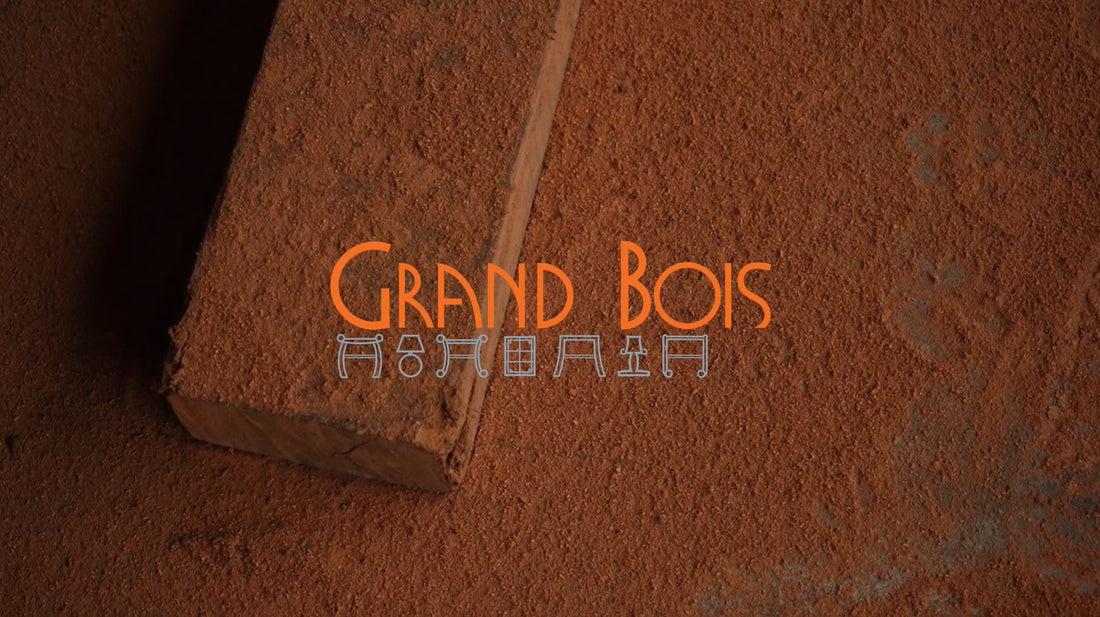
Wabi-Sabi, thực sự có nghĩa là gì?
Hiện tại có rất nhiều xu hướng nội thất ở Việt Nam đề cập tới Wabi-Sabi, khái niệm này phần nào đã trở thành phong trào tại Việt Nam. Mặc dù khái niệm Wabi-Sabi có nguồn gốc từ Nhật Bản, nhưng nó đã được áp dụng trên toàn thế giới. Tuy nhiên, trong những năm vừa qua, thuật ngữ 'Wabi-Sabi' thi thoảng đã bị lạm dụng, hay thậm trí bị sử dụng sai tại Việt Nam. Ngày nay, bất kỳ thiết kế nội thất nào có tông màu be, kết hợp với ý tưởng 'chủ nghĩa tối giản' đều được gắn nhãn 'Wabi-Sabi'. Về cốt lỗi, Wabi Sabi không phải phong cách thiết kế, mà nó là một triết lý và lối sống.
Wabi-Sabi bắt nguồn từ giáo lý Phật giáo về ba dấu hiệu của sự tồn tại, (sanboin) vô thường, (mujo) đau khổ và (ku) vô ngã. Hay nói một cách đơn giản - sử bất hoàn hảo, vô thường và sự thô. Khái niệm Wabi-Sabi đánh giá cao bản chất thô sơ của một vật thể hoặc không gian.
Đồ nội thất của Grandbois được làm từ 100% gỗ gụ hoặc gỗ cẩm nguyên khối. Cốt lõi khi thiết kế đồ nội thất của GrandBois luôn luôn tôn vinh sự tự nhiên và vẻ đẹp thô sơ của gỗ quý. Do vậy, đồ nội thất GrandBois có quá trình xử lý tối thiểu. Theo khái niệm Wabi Sabi: tập cách quan sát các vật liệu thô như gỗ trần, giấy và vải thay đổi theo thời gian, và từ đó tự làm cho bản thân trở nên khác biết và thú vị hơn.
Để thực sự áp dụng khái niệm Wabi-Sabi, bạn cần đánh giá cao sự thay đổi tự nhiên của đồ nội thất qua nhiều năm sự dụng, khi nó xài mòn đi. Do đồ GrandBois sự dụng gỗ thịt hoàn toàn tự nhiên nên đôi khi gỗ cần thở (co lại, giãn ra, một chút). Tuy nhiên, đồ gỗ GrandBois cũng trở nên đẹp lạ thường sau nhiều năm sử dụng. Nội thất của GrandBois từ cốt lõi, áp dụng khái niệm Wabi Sabi.
__
What actually is Wabi-Sabi?
There has been a surge of interior designers in Vietnam talking about Wabi-Sabi as a design style, the concept has become somewhat of a trend. Although Wabi-Sabi originated in traditional Japan as an aesthetic concept, it has been adopted all over the world. However, over the years, the term 'Wabi-Sabi' has been overused to the point of misused, especially in Vietnam. Nowadays, any interior designs which has a beige color tones, paired with an idea of 'minimalism' is labelled 'Wabi-Sabi'.
Wabi-Sabi is derived from the Buddhist teaching of the three marks of existence, (sanboin) impermanece, (mujo) suffering, and (ku) absense of self-nature. Or simplistically put - imperfect, impermanent, and incomplete. The Wabi-Sabi aesthetic appreciates the incompleteness and raw nature of an object or space.
Grandbois' furniture is made of nothing but solid rosewood itself. Our solid wood furniture pays an ode to the precious and beautiful wood which it is made from all natural ingredients with minimal processing. Just like the Wabi Sabi concept, which observes raw materials such as bare wood, paper and fabric change over time as it becomes more interesting.
The true adoption of Wabi-Sabi aesthetics would mean appreciating the natural behaviours of the furniture as it ages in your home over the years. Due to GrandBois' completely natural solid wood, at times the wood may breathe (contract, expand gently), but it also becomes incredibly beautiful the more it is used. With this, GrandBois' furniture at the very core, adopt the concept of Wabi Sabi.